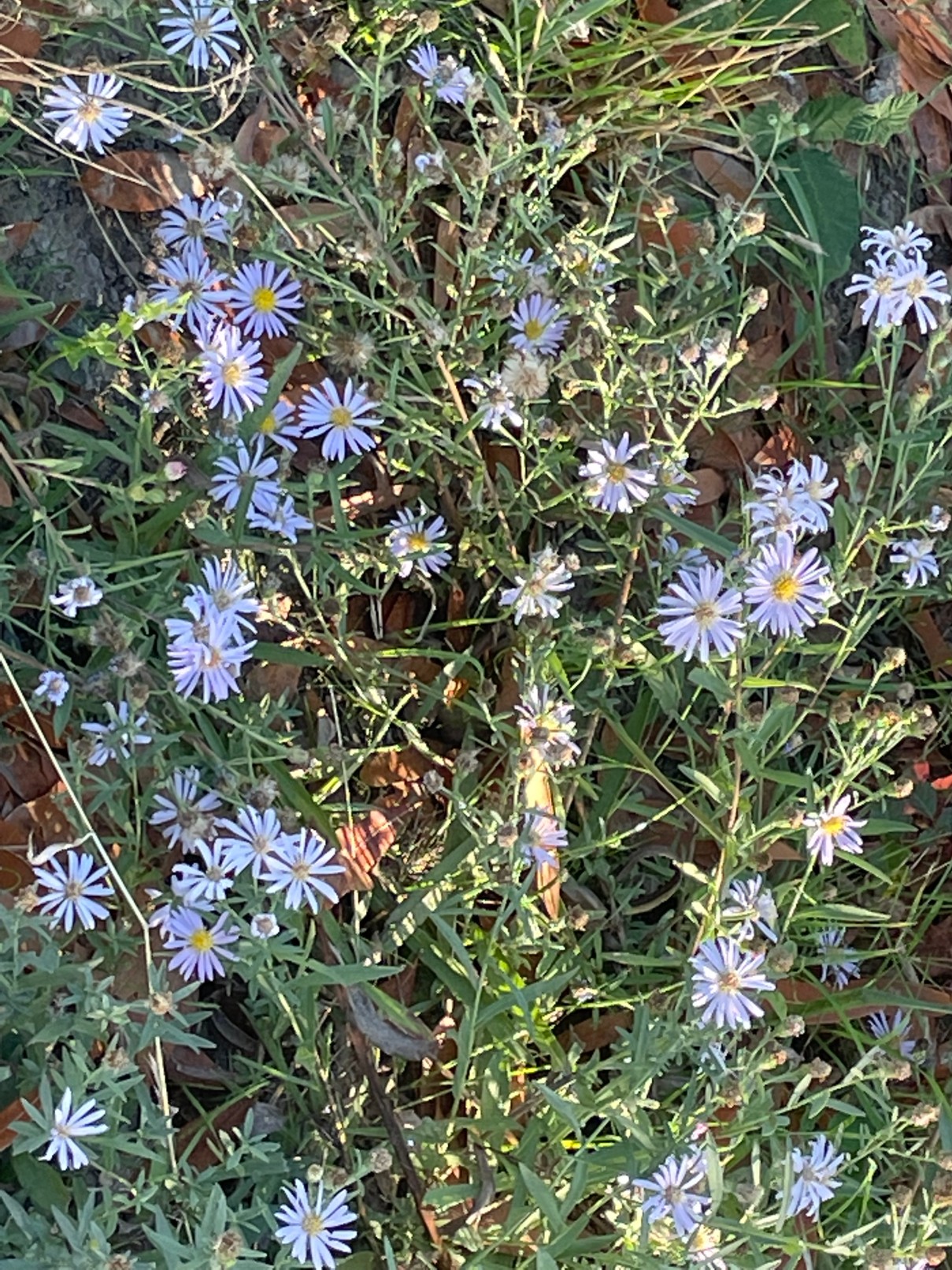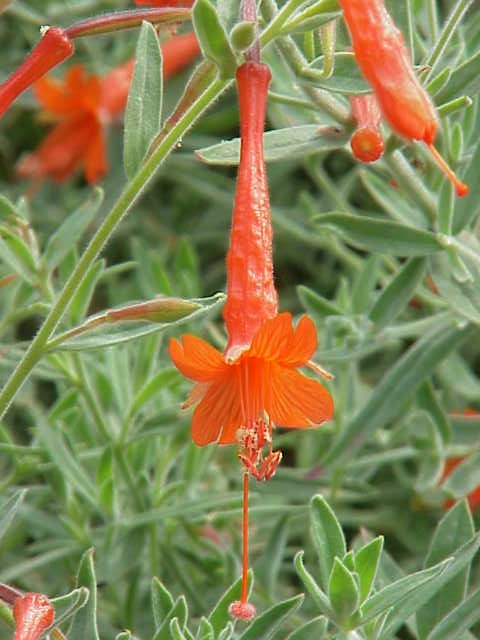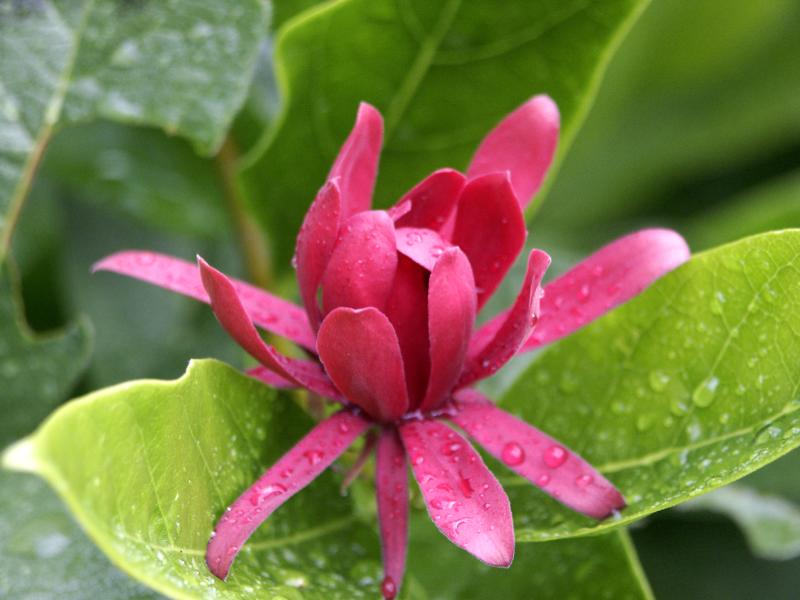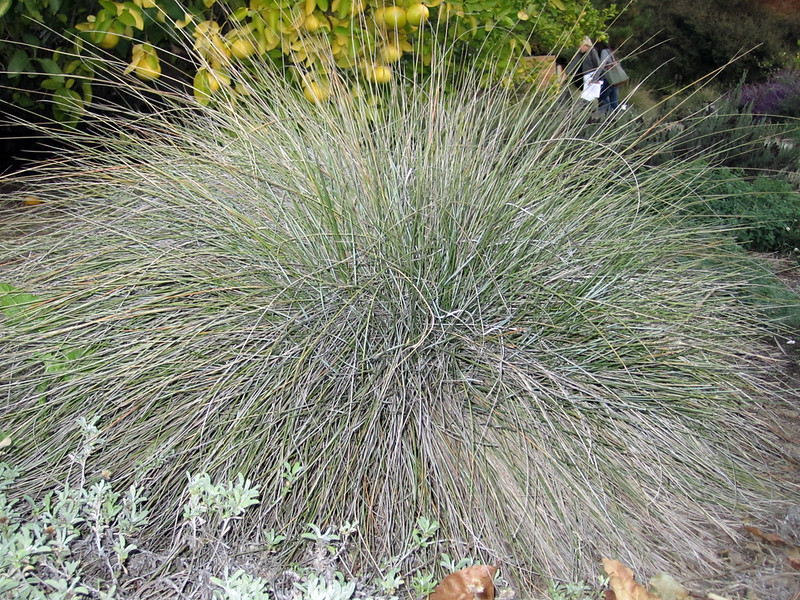By Hannah Aclufi

Hannah Aclufi, our Native Plant Nursery Manager. Photo courtesy of Marielle V Chua.
Hannah Aclufi, our Native Plant Nursery manager, is excited to share with you her top native plant picks for your garden this Spring. All of these species will be sold at our Spring Native Plant Sale.

Pacific aster (Symphyotrichum chilense). Photo courtesy of Hannah Aclufi.
For a wild area of the yard:
Pacific aster
Symphyotrichum chilense
Producing profuse mauve colored flowers with yellow centers, this is a cheery plant for a sunny to partially shaded area where it has room to spread out. It attracts a wide variety of pollinators, and is extremely adaptable: moderate to low/no water, sun to part shade.

California fuchsia (Epilobium canum). Photo courtesy of Kurt Stueber.
For attracting hummingbirds:
California fuchsia
Epilobium canum
If you want to attract the hummingbirds to your garden, look no further. California fuchsia provides a pop of color to the summer and fall garden when everything else is going dormant. Plant it in full sun and give it plenty of room. It likes to spread out. Cut it to the ground when it starts to look shaggy in late fall; you’ll see new growth in early spring.

Foothill penstemon (Penstemon heterophyllus). Photo courtesy of David A. Hoffman.
For red-violet to purple throated flowers in a warm sunny area
Foothill penstemon
Penstemon heterophyllus
I fell in love with Penstemon heterophyllus when I first saw it up on a dry ridge high above Sonoma Valley. Spikes of red-violet throated purple flowers glowed against the dry June hillside. Reaching 3-5 feet high and equally wide, imagine it in your garden.

Spicebush (Calycanthus occidentalis).
For stunning deep rose flowers in late spring
Spicebush
Calycanthus occidentalis
Named for the piquant smell of its leaves, this medium to large deciduous shrub naturally grows in canyons and on creek levees, but can do well in areas that get some winter water. The large rosy blooms are astonishing.

California fescue (Festuca californica). Photo courtesy of Brian Weldon.
For under oaks: California’s iconic grass
California fescue
Festuca californica
This is the quintessential grass you see growing under oaks in our local parks. Adaptable with regard to soil, light, and moisture, it has a stately elegance and looks beautiful waving in a breeze. The only thing it doesn’t tolerate well is sandy soil.
